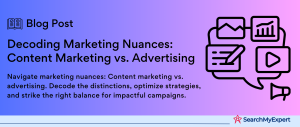The Rising Tide of Sustainability and Green Advertising
Defining Sustainability and Green Advertising
In today’s rapidly evolving marketplace, the terms “sustainability” and “green advertising” have transcended being mere buzzwords to embody essential principles for forward-thinking brands. Sustainability refers to the practice of operating in a manner that ensures the preservation and health of the environment, alongside social and economic responsibility. This concept is deeply intertwined with green advertising, a marketing strategy where products or services are promoted based on their environmental benefits. Green advertising is not just about selling a product; it’s about creating a narrative that highlights a brand’s commitment to environmental stewardship and ethical practices.
The Growing Significance of Sustainability-Driven Marketing
The significance of sustainability in marketing cannot be overstated. In an era where consumers are increasingly aware of the environmental impact of their purchases, brands have recognized the need to align with these values. This shift is not merely a moral imperative; it has become a strategic necessity. Businesses that incorporate sustainable practices and effectively communicate this through green advertising are likely to see a competitive advantage. These practices resonate with a broad base of consumers who prefer to support companies with a conscience.
Benefits for Businesses and Consumers Alike
For Businesses:
- Brand Differentiation: Sustainability and green advertising can set a brand apart in a crowded marketplace, offering a unique selling proposition.
- Customer Loyalty: Companies that commit to sustainable practices tend to foster stronger connections with their customers, leading to increased brand loyalty.
- Regulatory Compliance:
Embracing sustainability can help businesses stay ahead of environmental regulations, avoiding fines and legal issues. - Long-Term Profitability:
Sustainable practices often lead to efficiencies and cost savings, enhancing long-term profitability.
For Consumers:
- Healthier Choices: Sustainable products are often healthier, and free from harmful chemicals and additives.
- Environmental Impact: By choosing sustainable products, consumers can reduce their carbon footprint and contribute to environmental preservation.
- Social Responsibility: Purchasing from sustainable brands allows consumers to support ethical business practices.
- Quality Products:
Sustainable products often boast higher quality and durability, offering better value for money.
Understanding Consumer Perception and Behavior in Sustainable Marketing
Evolving Consumer Preferences: The Green Revolution
The modern marketplace is witnessing a significant transformation in consumer preferences. Increasingly, shoppers are gravitating towards products and brands that demonstrate a commitment to environmental sustainability. This shift is not just a fleeting trend but a deep-rooted change in consumer behavior, influenced by heightened awareness about climate change, resource depletion, and environmental degradation. Brands that recognize and cater to this eco-conscious mindset are likely to see a boost in their appeal and customer loyalty.
How Sustainability Influences Buying Decisions:
- Product Choice:
Consumers are actively seeking products with eco-friendly packaging, organic ingredients, and energy-efficient features. - Brand Loyalty: A brand’s commitment to sustainability can be a key factor in retaining customers in a competitive market.
- Willingness to Pay More:
Many consumers are willing to pay a premium for products that are ethically sourced and environmentally sustainable.
Consumer Skepticism and the Challenge of Greenwashing
One significant hurdle in sustainability-green-advertising is overcoming consumer skepticism. Greenwashing, a practice where companies misleadingly tout their products as environmentally friendly, has led to a trust deficit among consumers. Authenticity and transparency in green marketing campaigns are crucial in regaining consumer trust. Businesses must back their sustainability claims with tangible actions and clear, truthful communication.
Combating Greenwashing: Key Strategies
- Third-Party Certifications: Leveraging certifications from recognized environmental organizations can lend credibility to a brand’s sustainability claims.
- Transparency in Marketing:
Providing detailed information about the sustainability efforts and the environmental impact of products can build trust. - Consistency in Actions: A company’s environmental initiatives should be consistent across all operations, not just in advertising.
The Role of Ethical Consumerism and Environmental Consciousness
Ethical consumerism and environmental consciousness play pivotal roles in shaping consumer choices. Today’s consumers are more informed and concerned about the ethical implications of their purchases. They are looking for brands that not only claim to be sustainable but also demonstrate a genuine commitment to environmental stewardship and social responsibility.
Influencing Factors in Ethical Consumerism:
- Awareness of Environmental Issues:
As consumers become more aware of environmental challenges, they seek brands that contribute positively to the planet. - Social Influence:
Social media and influencer endorsements can significantly impact consumer perceptions and choices in favor of sustainable brands. - Personal Values: Many consumers align their purchasing habits with their personal values, choosing brands that reflect their beliefs in sustainability and ethics.
Embracing Sustainability Practices in Business Operations
The Imperative of Genuine Sustainability Commitments
In the current business landscape, the importance of genuine sustainability commitments cannot be overstated. Companies are increasingly expected to go beyond mere lip service and demonstrate real, impactful actions towards sustainability. This shift is not just driven by regulatory demands but also by a growing consumer expectation for ethical and environmentally responsible business practices.
Key Elements of True Sustainability Commitment:
- Holistic Approach:
Sustainability should be integrated into all aspects of the business, from the boardroom to the production line. - Long-term Commitment:
Sustainable practices should be part of a long-term strategy, not just short-term campaigns. - Stakeholder Involvement:
Engaging with employees, customers, and communities to foster a culture of sustainability.
Integrating Sustainability into Business Practices
For businesses to genuinely embrace sustainability, they need to weave these principles into the very fabric of their operations. This includes product development, packaging, and supply chain management.
Sustainable Product Development:
- Eco-friendly Materials:
Utilize materials that are renewable, recyclable, or biodegradable. - Energy Efficiency: Design products that consume less energy during use and production.
- Life Cycle Analysis:
Consider the environmental impact of products throughout their life cycle.
Sustainable Packaging:
- Reduced Packaging: Minimize packaging or use designs that require fewer materials.
- Recyclable Materials: Use materials that can be easily recycled to reduce waste.
- Eco-labeling: Clearly label packaging with recycling instructions and sustainability credentials.
Sustainable Supply Chain Management:
- Ethical Sourcing: Source materials and labor ethically and sustainably.
- Carbon Footprint Reduction: Implement strategies to reduce the carbon footprint of logistics and transportation.
- Supplier Engagement: Work with suppliers to ensure they also adhere to sustainability principles.
Transparency and Communication in Building Trust
Transparency in sustainability efforts is crucial in building consumer trust and credibility. Clear and honest communication about a company’s sustainability initiatives helps in establishing a brand as trustworthy and responsible.
Strategies for Effective Communication:
- Regular Reporting:
Provide regular updates on sustainability goals and achievements. - Honesty in Setbacks:
Be open about challenges and setbacks in sustainability efforts. - Consumer Engagement: Use various channels to engage consumers in sustainability initiatives.
Crafting Effective Sustainability-Green-Advertising Messages
The Essence of Authenticity in Sustainability Messaging
In the realm of sustainability-green-advertising, authenticity is not just a desirable attribute—it’s a necessity. Consumers today are more informed and discerning than ever, and they can quickly detect insincerity in brand messaging. Authenticity in sustainability advertising means ensuring that the environmental claims made are not only accurate but also backed by genuine actions and commitments. It’s about aligning marketing messages with the actual environmental impact of the product or service.
Key Components of Authentic Sustainability Messaging:
- Evidence-based Claims: Ensure that all sustainability claims are supported by concrete data and evidence.
- Consistency:
The sustainability message should be consistent with the brand’s overall practices and values. - Avoiding Overstatements: Be cautious not to overstate or exaggerate sustainability benefits.
Clarity and Understandability in Communication
Another critical aspect of effective sustainability-green-advertising is the clarity and understandability of the communication. The sustainability claims should be presented in a manner that is easily digestible and resonates with the average consumer. This involves avoiding technical jargon and presenting information in a straightforward, relatable way.
Enhancing Clarity in Sustainability Messages:
- Simple Language:
Use language that is easy to understand and avoids technical terms. - Direct Messaging:
Clearly state the sustainability benefits without ambiguity. - Visual Aids:
Use infographics or symbols to convey sustainability attributes effectively.
Leveraging Storytelling and Emotional Appeals
Storytelling and emotional appeals can be powerful tools in sustainability-green-advertising. A compelling narrative that connects the consumer to the brand’s sustainability journey can create a more profound and lasting impact than mere facts and figures. Using stories that evoke emotions can help in building a deeper connection with the audience.
Strategies for Effective Storytelling:
- Real-Life Impact: Share stories of how the company’s sustainability efforts are making a real difference.
- Customer Stories: Highlight customer experiences and testimonials related to the sustainability aspects of products or services.
- Brand Journey:
Narrate the brand’s journey towards sustainability, including challenges and achievements.
Using Data-Driven Evidence
In an era where consumers are increasingly skeptical, providing data-driven evidence of sustainability claims can significantly enhance credibility. This involves not just stating claims but backing them up with concrete, verifiable data. This approach not only reinforces the authenticity of the message but also demonstrates a commitment to transparency.
Incorporating Data into Advertising:
- Certifications and Awards:
Display relevant environmental certifications or awards that the product or service has received. - Quantitative Data:
Use statistics and figures to illustrate the environmental impact of products. - Comparative Analysis:
Show how the product or service fares against conventional alternatives in terms of environmental impact.
Leveraging Diverse Marketing Channels for Sustainability-Green-Advertising
Utilizing Traditional and Digital Marketing Channels
In the realm of sustainability-green advertising, leveraging a mix of traditional and digital marketing channels can significantly amplify a campaign’s reach and impact. Each channel offers unique advantages and can cater to different segments of the target audience.
Traditional Marketing Channels:
- Print Media:
Magazines and newspapers can reach a broad audience, especially when targeting local communities. - Broadcast Media:
Television and radio are effective for reaching a wide audience with sustainability messages. - Outdoor Advertising:
Billboards and posters can be used in high-traffic areas to increase brand visibility.
Digital Marketing Channels:
- Website:
A well-designed website can serve as a central hub for all information regarding a brand’s sustainability initiatives. - Email Marketing: Personalized email campaigns can effectively communicate sustainability efforts to existing customers.
- Online Advertising: PPC (pay-per-click) and display ads can target specific demographics interested in sustainability.
The Power of Social Media, Influencer Marketing, and Content Marketing
Social media, influencer marketing, and content marketing have emerged as powerful tools for sustainability-green-advertising. These channels enable brands to engage with their audience in a more interactive and personal manner.
Social Media:
- Engagement: Platforms like Facebook, Instagram, and Twitter allow for direct engagement with consumers.
- Viral Potential:
Effective sustainability campaigns can go viral, gaining widespread attention quickly. - Targeted Advertising:
Social media platforms offer advanced targeting options to reach specific audience segments.
Influencer Marketing:
- Credibility: Influencers with a commitment to sustainability can lend credibility and authenticity to a brand’s message.
- Reach:
Influencers have the potential to reach vast audiences, including niche groups interested in sustainability. - Relatability: Influencers can present sustainability messages in a relatable and engaging manner.
Content Marketing:
- Educational Content:
Blogs, videos, and infographics can educate the audience about sustainability issues and solutions. - SEO Benefits: Quality content can improve search engine rankings, making it easier for interested consumers to find information.
- Long-term Engagement: Content marketing helps in building long-term relationships with the audience through continuous engagement.
Channel Integration and Consistency in Messaging
For maximum effectiveness, it’s crucial to integrate various marketing channels and maintain consistency in messaging across all touchpoints. Consistent messaging reinforces the brand’s commitment to sustainability and ensures a unified brand experience for the consumer.
Strategies for Effective Channel Integration:
- Unified Campaign Themes:
Ensure that all marketing channels convey the same core message and theme. - Cross-Promotion:
Utilize different channels to promote content across platforms. - Consistent Visuals and Tone:
Maintain a consistent visual style and tone of voice across all marketing materials.
Measuring and Evaluating Sustainability-Green-Advertising Efforts
Establishing Goals and Objectives
For any sustainability-green-advertising campaign to be effective, it’s crucial to establish clear goals and objectives at the outset. These goals should be specific, measurable, attainable, relevant, and time-bound (SMART). They provide a roadmap for the campaign and a benchmark against which success can be measured.
Examples of Goals and Objectives:
- Awareness:
Increase consumer awareness of the brand’s sustainability initiatives by 30% in six months. - Engagement:
Boost engagement with sustainability-related content by 40% over the next quarter. - Sales:
Achieve a 20% increase in sales of eco-friendly products within a year.
Developing Metrics and Tracking Systems
To effectively measure the impact of sustainability initiatives, it’s essential to develop appropriate metrics and implement tracking systems. These metrics should align with the set goals and provide tangible data to assess the campaign’s performance.
Key Metrics for Sustainability Advertising:
- Website Traffic: Monitor the number of visitors to sustainability-related pages on the brand’s website.
- Social Media Metrics: Track likes, shares, comments, and views of sustainability-related posts.
- Sales Data: Analyze sales figures of products promoted through sustainability campaigns.
Tracking Systems:
- Analytics Tools: Utilize web and social media analytics tools to track online engagement and website traffic.
- Customer Surveys:
Conduct surveys to gauge consumer perception and awareness of the brand’s sustainability efforts. - Sales Tracking: Use sales tracking systems to directly correlate sales data with advertising campaigns.
Utilizing Data and Insights for Strategy Refinement
The data and insights gathered from these metrics are invaluable for refining and optimizing campaign strategies. They provide a feedback loop that helps in understanding what works and what doesn’t, allowing for adjustments to be made in real-time.
Strategies for Optimization:
- Data-Driven Decisions:
Base adjustments to the campaign on concrete data and insights. - A/B Testing:
Test different sustainability messages and channels to see what resonates best with the target audience. - Continuous Learning: Use insights from each campaign to inform and improve future sustainability advertising efforts.
Navigating the Ethical Landscape of Sustainability-Green-Advertising
Addressing Greenwashing and Ethical Sustainability Practices
In the pursuit of effective sustainability-green advertising, businesses face the challenge of avoiding greenwashing, which can undermine their credibility and trust with consumers. Greenwashing occurs when a company exaggerates or falsely claims its products or practices are environmentally friendly. To ensure ethical sustainability practices, businesses must focus on authenticity and honesty in their sustainability claims.
Strategies to Avoid Greenwashing:
- Substantiated Claims: Ensure that all environmental claims are backed by reliable evidence and data.
- Transparency:
Be open about the sustainability journey, including achievements and areas for improvement. - Internal Audits:
Regularly audit internal practices to ensure they align with advertised sustainability claims.
Compliance with Environmental Regulations and Consumer Protection Laws
Adherence to environmental regulations and consumer protection laws is crucial in sustainability-green-advertising. Compliance not only avoids legal pitfalls but also demonstrates a brand’s commitment to ethical practices.
Key Areas of Compliance:
- Environmental Regulations: Stay updated with and adhere to local and international environmental laws and standards.
- Consumer Protection Laws: Ensure that advertising claims do not mislead consumers, in line with consumer protection regulations.
- Industry Standards:
Follow industry-specific guidelines and best practices for sustainability.
Collaborating with Stakeholders for Ethical Practices
Collaboration with various stakeholders, including environmental organizations, industry experts, and other businesses, can greatly enhance the ethical standing of a brand’s sustainability efforts.
Benefits of Collaboration:
- Shared Knowledge: Collaborating with experts can provide valuable insights into sustainable practices and innovations.
- Credibility:
Partnerships with respected environmental organizations can lend credibility to a brand’s sustainability claims. - Industry Influence: Collaborating with peers can lead to industry-wide improvements in sustainability practices.
Conclusion
In the journey towards mastering sustainability and green advertising, businesses are tasked with the responsibility of not only promoting their products but also championing the cause of environmental stewardship. This comprehensive guide has navigated through the nuances of understanding consumer perception, integrating sustainability into business operations, crafting authentic messages, leveraging diverse marketing channels, and measuring the impact of these efforts.
Moreover, navigating the ethical landscape of green advertising by avoiding greenwashing and adhering to environmental regulations has been emphasized as critical. Collaborations with stakeholders and industry experts have been highlighted as a means to bolster ethical practices.
Lead the market with the strategic insight of our Advertising Firms.
Table of Contents
Toggle






